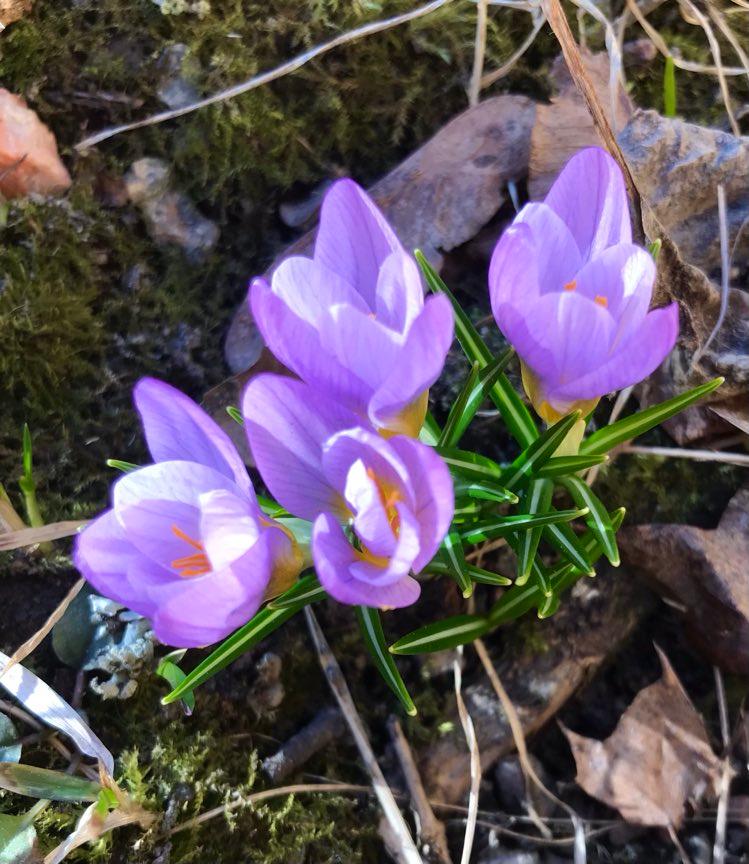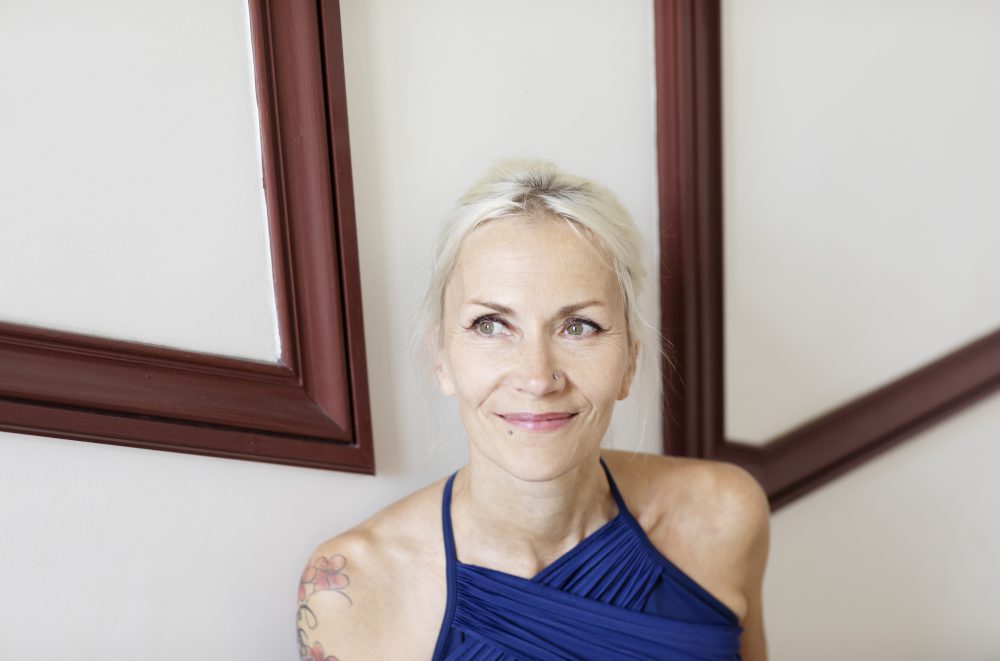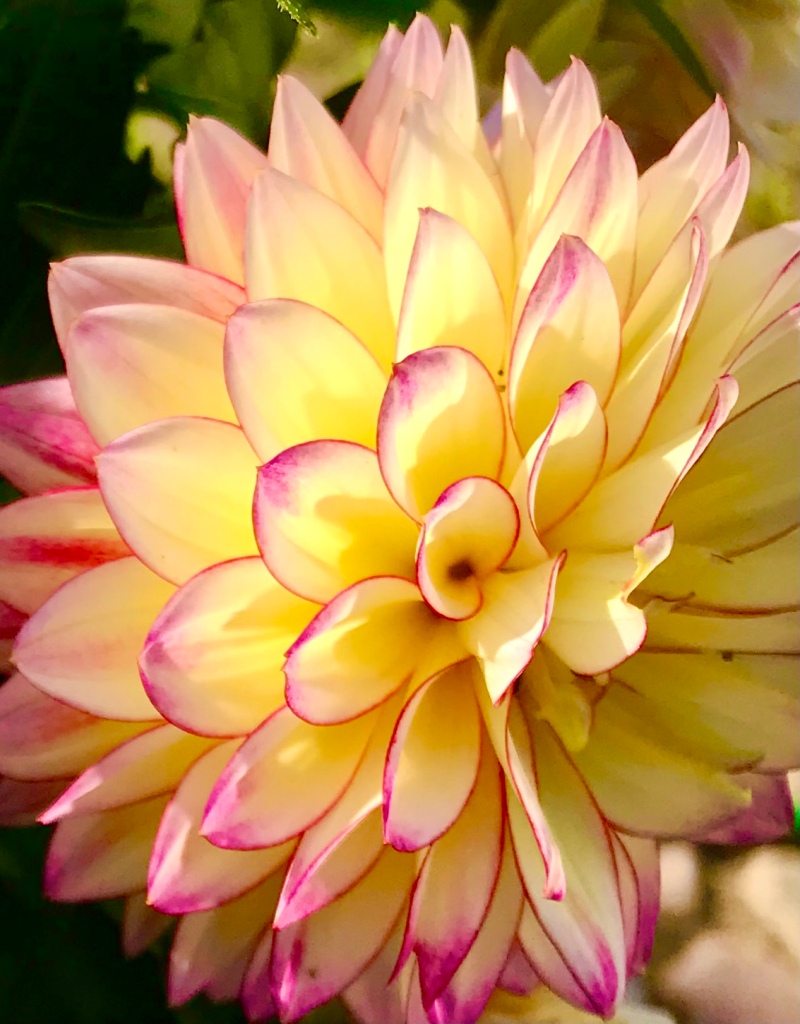My previous post was about self-confidence and trust. Now I’d like to think about trust from another perspective. Is trust finally always trust in yourself? Should we ever trust the other completely? If we want to trust, are we able to? Would it be an important experience for our well-being to completely trust the other?
In my opinion the majority of people don’t trust completely the other(s) and this is certainly also taken as a sign of a certain maturity in life in general. We shouldn’t give our life to the hand’s of another without having at least something we can control.
When I give sessions in Biodynamic Cranio-sacral therapy I can see how my clients progressively get back to the original rhythm of the human being. This rhythm also contains the subtle movement we were continuously performing in the womb through the inherent ebb and flow. The “tides” are the universal phenomenon of expansion and constriction of all life. The trust can feel like that: being lulled by the universe continuously. My own experience is that if you can go ”back” to the child’s – or the embryo’s – total trust, you will have something very precious in your life.
I was recently talking with a student of mine about one session we did together and where she experienced some uncertainty in our relational field before the session started. In our conversation we talked about our respective boundaries and what happened in her system when she new I was going to come to the contact with her physical body. In these moments it’s very typical that the body lives its own life. In your mind you know you’re safe, but your body starts to feel unconfortable – maybe because of the anticipation of the loss of control.
This student then said that she’s well aware that she should remain responsible of her own life even in the most deeply relaxed moments of the session. It was the first time I needed to think about this thoroughly…Is it so? It’s a very fascinating question of how responsibility and letting go of control entwine.
Should we be all the time responsible for ourselves in a therapeutic session? If we do control the situation continuously, it becomes impossible to relax totally. Could this kind of therapeutic session be a perfect moment to test the trust and let go of one’s own boundaries? Naturally it all depends on the client’s past experiences and the therapist’s ability to carry the other through the session respecting the boundaries and still allowing the other to let go of the responsibility.
But where and when can we meet somebody with this kind of sensitivity and awareness and synchronization with our embryonic rhythm? Even when we trust people in our mind, we can’t reach this depth if the other is not in touch with this original peace. The Biodynamic Cranio-Sacral Therapy offers a great opportunity of experiencing this kind of trust. Emergence of the original trust gives us a new fresh beginning in life! 💜🌸

🟠 LA RELAXATION ET LA RESPONSABILITÉ 🟠
Le sujet de mon dernier post était la confiance. Maintenant, je voudrais traiter ce sujet d’un autre point de vue. Est-ce que la confiance est finalement toujours de la confiance en soi-même? Est-ce qu’il est important de pouvoir compter complètement sur l’autre? Si nous voulons compter sur l’autre, pouvons-nous le faire? Ce genre de confiance totale, serait-il important pour notre bien-être?
Je pense, que la majorité des gens n’ont pas confiance dans les autres – et certains en personne. Ceci est souvent considéré même comme un signe de maturité. Nous ne sommes pas censés donner notre vie entre les mains d’autrui sans avoir quelque contrôle nous-mêmes aussi.
Lorsque je donne des séances en biodynamique crânio-sacrée, je suis le témoin du processus qui conduit mes clients petit à petit à retrouver leur rythme original. Ce rythme comprend un mouvement subtile qui va et vient comme la marée. Ces ”mouvements de la marée” font partie du phénomène universel de l’expansion et de la rétraction – observable partout dans la Nature. La confiance originale est comme si on était bercé doucement par la vie à chaque moment. Ayant pu voyagé dans le temps vers cette confiance totale de l’enfant et même celle d’un embryon, j’ai moi-même cette expérience d’avoir trouvé quelque chose de très précieux pour ma vie dans ce rythme.
Il y a deux jours, je discutait avec une cliente concernant sa dernière séance où elle a vécu des sentiments d’insécurité dans le champ avant la séance proprement dite. Dans notre conversation, nous avons parlé des limites et ce qui se passait dans son système au moment où elle savait que j’allais venir en contact avec son corps. Dans ces situations, nous pouvons souvent constater que le corps vit sa vie. Par ça, je veux dire, que dans la tête, on peut se sentir tout à fait bien, mais on voit que le corps réagit à sa façon – éventuellement par la peur due à l’approche de la perte du contrôle.
Ma cliente m’a éclairci ses pensées par rapport à ce moment et elle m’a dit qu’elle était bien consciente qu’elle devait être responsable d’elle-même même dans les moments les plus détendus. Et par là, elle a fait émerger la question fascinante de savoir comment la responsabilité et le lâcher prise s’entrelacent et quelle est leur relation. Est-ce que la personne qui est venue en séance doit garder la conscience de ses limites et être responsable? Est-ce que la relaxation totale est possible si nous voulons être responsable? Ou bien, est-ce qu’une séance thérapeutique est justement un moment de lâcher prise par rapport à tout? Bien entendu, tout dépend des expériences antérieures du client, mais aussi de la capacité du thérapeute de porter le client tout en respectant ses limites et lui permettre de lâcher prise pour un moment.
Mais combien rares sont les opportunités de rencontrer quelqu’un ayant cette sensibilité, cette conscience et la capacité de se synchroniser avec le rythme de l’embryon? Même si dans notre tête, nous faisons confiance, nous ne pouvons pas aller plus loin si le thérapeute n’y est pas aussi, dans la paix originale.
La biodynamique crânio-sacrée offre une possibilité de revivre la confiance à ce niveau-là. Nous pouvons avoir une nouvelle naissance! L’émergence de la confiance originale veut dire le commencement d’une nouvelle vie pleine de confiance et de curiosité. 🧡🌸
🔴 VASTUULLISTA RENTOUTUMISTA 🔴
Edellinen blogipostaukseni käsitteli itseluottamusta ja luottamuksen tunnetta. Nyt haluan rapsutella luottamusaihetta auki toisesta näkökulmasta. Onko luottamus aina lopulta itseluottamusta? Pitääkö toiseen ihmiseen koskaan luottaa täysin? Jos haluamme luottaa toiseen, miten kykenemme siihen? Olisiko täydellinen luottamuksen kokemus tärkeä hyvinvoinnillemme?
Luulen, että suurin osa ihmisistä ei luota täysin muihin ihmisiin, jos kehenkään. Tällaista suhtautumista pidetäänkin usein jonkinlaisena merkkinä aikuisuudesta. Meidän ei pidä antaa elämäämme kenenkään käsiin ilman että meillä säilyy joku kontrolli itsellämme.
Kun itse annan biodynaamista kraniosakraaliterapiaa, saan nähdä, miten ihmiset vähä vähältä pääsevät takaisin alkuperäiseen kohtuaikaiseen rytmiinsä. Tässä rytmissä tuntuu myös hienovarainen liike, joka on jatkuvaa kuin vuoroveden vaihtelu. Nämä ”vuoroveden liikkeet” ovat osa universaalia laajenemisen ja supistumisen ilmentymää, jonka voimme nähdä kaikessa elämässä. Luottamus voikin tuntua siltä, että elämä tuudittaa meitä kaiken aikaa. Se on myös oma kokemukseni, että kun saa matkata ”takaisin” tämänkaltaiseen lapsen tai jopa sikiön totaaliseen luottamuksen tunteeseen, voi löytää jotain todella arvokasta elämäänsä!
Pari päivää sitten keskustelin yhden oppilaani kanssa hänen viimekertaisesta hoidostaan, jossa hän koki epävarmuuden tunteita vuorovaikutuskentässä ennen kuin varsinainen hoito alkoi. Keskustelussamme kävimme läpi tuntemuksia keskinäisistä rajoistamme ja sitä, mitä hänen systeemissään tapahtui hänen tietäessään, että olin tulossa fyysiseen kontaktiin hänen kehonsa kanssa. Näissä tilanteissa kun voi monesti huomata, että keho elää ”omaa elämäänsä”. Mielen tasolla voi siis tietää olevansa turvassa, mutta keho alkaa hätääntyä – ehkä kontrollin menettämisen pelossa.
Hän valaisi minulle ajatuksiaan tuon hetken suhteen ja sanoi ymmärtävänsä, miten hänen tulee säilyttää vastuu itsestään aina kaikkein syvimmissä rentoutumisen hetkissäkin. Ja näin hän nosti esiin todella kiehtovan kysymyksen vastuun ja irtipäästämisen suhteesta hoitotilanteissa ja siitä, miten ne kietoutuvat toisiinsa.
Onko nimittäin niin, että hoidettavan pitää olla koko ajan tietoinen rajoistaan ja kantaa täysi vastuu itsestään? Onko totaalinen rentoutuminen toisen käsissä edes mahdollista, jos haluamme pitää vastuuntunteestamme kiinni? Vai voisiko tuollainen hoitotilanne olla juuri mahdollisuus testata luottamusta ja päästää kerrankin irti omista rajoista? Se riippuu luonnollisesti hoidettavan kokemusten lisäksi hoitajan kyvystä kantaa toista ihmistä hoidon ajan tämän rajoja kunnioittavasti ja sallien osan ihmisyyttä laskeutua pois vastuun kantamisen alueelta.
Kuinka harvassa lopulta ovatkaan ne mahdollisuudet, että tapaamme ihmisen, jolla on riittävä herkkyys, tietoisuus ja kyky synkronoitua tuon systeemissämme vieläkin vaikuttavan sikiöajan rytmin kanssa? Vaikka luotamme ihmisiin ajatuksen tasolla, emme pääse itsessämme näin syvälle, ellei toinenkin ole kosketuksissa tuon alkuperäisen rauhan kanssa.
Biodynaaminen kraniosakraaliterapia on suurenmoinen mahdollisuus saada kokea tämän tason luottamusta. Se voi edesauttaa tunnetta, että saamme syntyä uudelleen ja aloittaa uudenlaisen elämän – luottavaisina ja uteliaina. Sitä alkuperäisen luottamuksen esiinnousu meissä tarkoittaa. ❤️🌺









